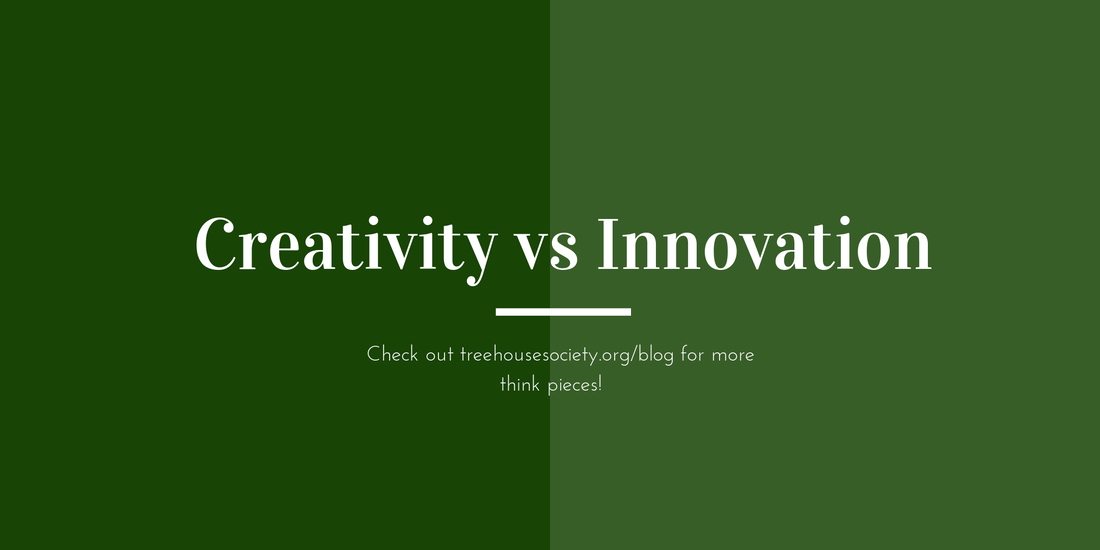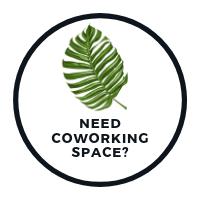|
Experiments for startups are necessary in the fast-paced world. Experimentation requires business owners to be open-minded with the results. The results will then suggest what to do for products, marketing, customer engagement, just to name a few. It helps business owners to set their planners by establishing relevant goals and then follow them smartly. These experiments in startups allow them to run at low costs and stay agile.
As businesses are short of funds in the initial days, that is why these experiments are the best solution. These experiments should tell you who your customers are and what do they want from you. You get to know their needs, which will give you an idea of what to produce next. These are the basics but pivotal to running a business. That is why we will discuss some reasons why experiments make startups cost low. Experiments will also help you to understand your audience and derive the right insights. These are the reasons why you should run experiments with everything you do: Reasons Why Startups Cost Low: Inexpensive experiments that are employee-driven tend to be more innovative. These experiments bring positive outputs and establish the company's position. Results also convince many investors to fund the business to that some real action can take place. Get to Know the End Users: You might have started your business, but you are still unclear about who your actual end-user is. This happens with most of the entrepreneurs. They fail to understand their final customers. That is why these experiments include such activities that tell you more about your end-users. These experiments are low cost, but they are building the roots for your business. Provides an Understanding on how to Invest Innovatively: Businesses always figure out expensive ideas on how to invest innovatively. These ideas, at times, fail due to a lack of information about the real market demands and emerging trends. That is why low-cost experiments help entrepreneurs to invent habit-forming products that generate a high level of need among the customers. Generate an Insight to Work On: Without insight, there is no purpose in the business. Insights can never be driven out by investing a huge amount of money. You can only figure out insights by ensuring low-cost experiments. These experiments tell you to capture the need and then work on that. They give you an idea of what can be the next emerging need of your customers. Always Make Improvements to Grow: The inexpensive experiments also tell you a way how to grow. They tell where you went wrong in your implementation process. You can easily correct yourself by making rapid improvements. You can only get to realize if you conduct a small experiment before the final launch. That is why businesses always test their products before launching them to the end customers. Conclusion: Experiments are never a waste of time for your business. You might think like that, but you do not realize that these experiments set the basics for your business. That is why experiments are the most important part. If you have zero knowledge about your customers, then there is no use of your business objectives. REFERENCES https://www.startuprocket.com/articles/how-to-conduct-free-and-low-cost-experiments-to-validate-your-new-business-idea http://news.mit.edu/2014/michael-schrage-book-business-experiments-innovation-1007 https://www.funnelenvy.com/blog/importance-experimentation-running-lean-business/ https://hbr.org/2011/03/a-step-by-step-guide-to-smart-business-experiments https://www.jstor.org/stable/j.ctt9qf969
0 Comments
Introduction:
Brand differentiation is a way for a business to be recognized in their field. A company could easily stand out at the top because of its unique and differentiated products, as well as its value proposition. However, another company could be playing on cost rather than implementing product differentiation. Managing your cost is important, but it doesn't promise you consistent growth if you are in a perfect competition market. This is because sooner or later, there will be a competitor that would offer a price lower to yours. Cost and product differentiation are both important in any industry. You must try to experiment with your products to ensure you provide the most unique and cheapest products in the industry. Why Is There A Need For This? The world is changing at a fast pace, and consumers are continually looking for unique products for their lifestyle. The first thing a company should look out for is its consumer. You have to satisfy your consumer or else your products won't be around the market for a while. You should work on how to better serve your customers rather than squeezing every nickel and dime for yourself. However, companies are reluctant to bring in change, especially the older ones and they are too used to the way they do things. Customers would rate those older companies as an innovation-less company. They would not buy your products for the future and this would defame your company. You Lose Customer Following: In the worst scenarios, the company might lose its followers. This is a dark phase for the company. As this time era is all about your reach, losing following pushes you in the back of the line. If you are planning to bring in changes in product for the future, you would have a negligible audience to promote that change. As the customers would still consider you with zero innovation, this can damage your current and future growth. Less Differentiated Products Are Prone To Be Replicated: Do you really want to be basic? Of course, we all believe in the comfort of being basic, but you and your company must get out of the comfort zone to grow. That might mean stop being basic! Being a basic company with basic products means competitors that easily can replicate your products. Because you are not habitual of bringing in frequent changes to your products, they are easily copied. Competitors can replicate the parts of your product and can find them at lower prices. As they would be paying lesser than you, this would cause them to have a lower cost price. Since you aren't backing your higher rates than them with innovative products, people won't buy from you. You lose your market share and profit just by practicing the routine items for several years. Experiments Lead To Innovations: This phrase is very true when you are experimenting with your products. A planned experiment would help you to identify what changes you can bring to your product as well as how to potentially lower your price to stay competitive. This would add distinguishing features for your product. No matter how small these features might seem, they are for sure noticed by customers and considered whenever they make a purchase. Even if you don't end up getting an innovated product, there would be learning for your next try. You can put these learnings in your next experiment and end up getting an even better product than this. So, you must never stop experimenting even if you fail, as this would at least help your learning. References: https://www.movestheneedle.com/all-blog/2019/2/26/how-to-experiment-your-way-to-success https://www.inc.com/thomas-oppong/why-the-freedom-to-experiment-and-fail-is-important-for-innovators.html https://hbr.org/2011/03/a-step-by-step-guide-to-smart-business-experiments https://www.optimizely.com/resources/hbr-using-experiments-launch-new-products/ https://www.unhcr.org/innovation/why-theres-no-innovation-without-experimentation/ Introduction
Ideas play an essential role in our daily lives. It gives us an edge to improve and excel in different fields. Ideas also play a vital and pivotal role in business too. Amazing ideas can lead a company towards better earning and growth. The key to the success of a business is to have developed and integrated designs, which might include close analysis of the competitors, targeting a specific audience as per the nature of the product, mission and visions should be indicated. Above all, everything should be well-drafted. There are many benefits of good ideas for the business such as creative ideas lead towards building network and associations within the market, strengthens the brand name, generate active and passive income, expands the business and strengthens the economy as a whole. On the other hand, sometimes these business ideas can be proved dangerous for the world as well, even if they look innocent enough from the surface. Here are a few factors: Destruction of Humanity and Nature The greed for maximizing profits leads to the destruction of humanity and nature. These profit-maximizing ideas are based on threats to humanity and nature, which is what most defense companies are doing. They are producing weapons, and their excuse is to protect humanity, but in reality, they are doing the most destruction. Polluting the Environment Industries are polluting the environment causing health problems for the citizens. One notable example is the fast fashion industry. Most of them do not comply with environmental standards and pollute the water with their fabric dye. Even if their tags claim that they are environmentally friendly, the reality is that they are hazardous for the world. A Threat to Existing Economy Remember when fax, landline, and floppy discs became irrelevant with the technology advancement? People with existing jobs became irrelevant due to technological advancement. However, one could argue that this is a great thing for humanity as things are moving at a faster pace now. Harmful for Human Health Business ideas such as manufacturing cigarettes are harmful to human health. Startups who are inventing vapes need to grow their market share, and they are recruiting customers from the teenage population. Although the market to be for people who are quitting smoking, they are producing addictive fruity flavor vapes causing teenagers to be addicted to their nicotine products. A recent survey shows an alarming rate of 24.7% of teenagers is addicted to vaping. Creating Rivalries Mind-blowing business ideas such as penetrating in other markets by low balling can create rivalries on national and international grounds. This can affect the economy politically, socially, and economically. It can also cause severe tensions between trading countries in the world. Promoting Immorality and Indecency in the Society Some of the entertainment businesses can seriously affect and shape our society. This doesn't even need to be traditional Hollywood and blockbuster movies that affect teenagers. It was proven that social media affect teenagers, and recently, Instagram admitted that it didn't confirm the age of its users. Think about the many influencers on that platform that probably have been displaying inappropriate behavior to children under 13. Conclusion Although there are side effects to businesses, some are milder or could be a better side effect than others, some are positive, and some are negative. The examples used in the effects above all look like typical businesses, but all have some serious side effects. There are always advantages and disadvantages of what we do and pursue. This is why it should always be kept in mind that we should always strike a balance between right and wrong. Set the year right and change the world for the better instead of being too dangerous for the world. REFERENCES AND CITATIONS https://link.springer.com/chapter/10.1007/978-3-642-39336-5_15 https://opentextbc.ca/businessopenstax/chapter/threats-and-opportunities-in-the-global-marketplace/ https://www.strategy-business.com/article/03308?gko=d78df https://www.newscientist.com/article/2201697-destruction-of-nature-is-as-big-a-threat-to-humanity-as-climate-change/ https://www.worldwildlife.org/threats/pollution https://www.safetyandhealthmagazine.com/articles/print/17921-number-of-teens-vaping-hits-record-high-survey-shows Introduction:
Are we all familiar with the term innovation? Innovation means acquiring new ideas, some incredible thoughts, and imaginations, and a new way to do things. We imagine innovation to be a challenging thing done by a mad scientist, but it is happening every day in products and companies. Think about all the new products on Product Hunt every day. Even among many types of innovations, there are two types of them, known as continuous innovations and radical innovations. To understand these terms better, we need to know what they are. In this blog post, we will compare the difference between continuous innovation and radical innovation and how the world of startups and technology have used both to innovate and evolved. Continuous Innovation: Continuous innovation is about adding something to a concept which already exists. It is about modest, incremental, ongoing upgrades or enhancements of an existing product, service, or technologies. We are experiencing that every day in San Francisco as a new startup seems to pop up all the time with a new idea or an implementation of an old existing product. Some of these "innovations" would not stick unless there is mass adoption. And if it doesn't succeed, one must make continuous improvement, which is a method to identify opportunities while reducing waste in the process, which lean startup is all about. Continuous innovation stresses the flexibility in making strategies as well as the effectiveness of operations, especially in a business management situation. A good example would be the iPod. Remember the iPod? iPod was an mp3 player, but Apple didn't invent the mp3 player. Tomislav Uzelac created it, but Apple made continuous innovations to the iPod with the round turning for song selection instead of buttons. Radical Innovation: Radical innovation is about a product that destroys or supplants an existing business model in the market. A lot of startups in Silicon Valley, especially in software, are engaged in radical innovation. This type of innovation is not made for achieving short term goals. Your current ideas and processing will be fruitful in future when implied. Let's go back to Apple. The iPhone is a radical innovation. Before iPhone was out, who'd have thought a phone could do everything that it could do? It made the flip phone irrelevant and changed up the whole industry. Another example would be Netflix. Netflix entered the home entertainment industry in 1997 selling mail-order DVD rentals, which by the way, they still do if you live in rural America with lousy internet. At the time, Blockbuster dominated the market and didn't see Netflix as a threat. And in 2000, Netflix offered Blockbuster to buy it for $50million. The executives were so blindly shortsighted that they laughed at the offer. Look who is laughing now? Conclusion: Although there are differences in continuous and radical innovation, it is very obvious that companies could use both to adapt to the times. Although both of these are contrasting, the applications of these two in the modern world still cover a wide range. Many companies focus on these concepts to put them into action. Be like Apple, adapt to the times, and eventually change the game instead of being like Blockbuster, who was left behind in the dust. References http://www.incrementalinnovation.com/incremental-innovation/incremental-innovation-vs-radical-innovation http://www.innovarsity.com/coach/innovation_radical_vs_incr.html https://www.forbes.com/sites/danielnewman/2018/05/08/preparing-for-the-future-by-embracing-radical-innovation/ https://searchconvergedinfrastructure.techtarget.com/digitaltransformation/Empower-Your-Business-with-Continuous-Innovation https://www.thoughtco.com/history-of-mp4-1992132 https://www.gq.com.au/entertainment/film-tv/the-tale-of-how-blockbuster-turned-down-an-offer-to-buy-netflix-for-just-50m/news-story/72a55db245e4d7f70f099ef6a0ea2ad9 Introduction
Creativity and innovation are the two terms that are often used interchangeably in business meetings, sessions that involve brainstorming, university lectures, Ted Talks and, in various firms’ corporate mission and vision statements. These two, however, are not the same and it is very crucial to learn the difference between the two to be able to put the two concepts in practice in a better way. Creativity and innovation are significantly distinguished from each other but both are highly valued, prized, and needed in an organization for efficiency and effectiveness of the organization to meet its corporate goals and objectives. So what is the difference between creativity and innovation? What is Creativity? Creativity can simply be understood as the cognitive ability of an individual to see, perceive, think and analyze things differently and uniquely often by coming up with new imaginative ideas that do not exist in the current systems and processes. Companies prefer and want to hire creative individuals who could bring new ideas and values which would help change the already existing, accepted, and believed patterns of behavior by bringing novelty. What is the difference between creativity and innovation? As mentioned above, creativity is the art of being unique and different but innovation is the art of implementing the change by putting the ideas that go inside the mind in practice. While creativity is mostly abstract, innovation is more action and results-oriented. The main difference between the two is just the focus. In the business world, performance is the most important because it helps to measure success. Hence, anything that helps to improve performance is valuable to organizational success. Creativity is mostly subjective and abstract as it involves ideas and thoughts that go in a person's mind making it hard to measure and evaluate. Innovation, on the other hand, can be measured and evaluated as it is action-oriented. Innovation does not need to be drastic or dramatic. Any slight change in the previously practiced norms and traditions, or slight tweaking in processes, and systems could be an innovation. The difference between the two concepts can further be understood by what Hunter said in the Business News Daily. He stated, if the employees of an organization sit together in a brainstorming session and come up with numerous new ideas, they exercise and display creativity but not innovation as innovation is only displayed when those ideas are put in to practice and something new comes in to a physical existence that can be touched, felt or smelled. He further elaborated that many business organizations and leaders focus greatly on generating novel ideas but do not pay attention to creating new products, processes, and designs that help the organization in achieving its corporate goals and objectives. How can innovation be fostered in an organization? Creativity can easily be put in the organizational culture but innovation cannot be forced, but better to be fostered. This can be done by adopting the design thinking approach which is a system that has overlapping spaces and is not a continuous step by step procedure to get through. Design thinking involves identifying the current or inherent problem and then finding solutions to it. These solutions are found by brainstorming and generating new ideas and approaches. Once a series of alternatives are generated the best one is chosen to be implemented. The last step is the implementation of the chosen idea which requires the series of activities and practices to put the thought in action. The design thinking approach is very useful as it helps the organizations to identify problems even before they are visible and this helps them to track the issues that they might be missing on for a long time. Furthermore, it greatly helps in linking the creativity and innovation as it connects the amazing ideas generated through creativity to the actual customers or market that demands it. The creativity that is used and applied to form new products and processes in an organization is what the leaders want and values the most in the corporate world. It is the responsibility of the leaders in an organization to promote the creative culture and use a design approach to bring innovation in the organization by motivating people to think outside the box and become active and results-oriented. Risks Associated With the Innovation Innovation itself is a huge risk and comes up with a big possibility of two things: risk and failure. To be innovative means to take risks and risk always comes up with a possibility of failure. However, failure is something that the organization must not be scared of as it helps you to learn and improve in the future. If the business leaders do not let go of their fear of failure they will never be truly able to foster innovation in the culture, practices, and products of the organization. Many popular organizations used the design thinking approach and succeeded in bringing innovation in the organization. Proctor & Gamble under the influence of CEO Alan Laftley was able to increase its value drastically to a hundred billion by bringing innovation in the organization. The Kaiser Permanente applied design thinking approach and were successfully able to improve the performance of the organization in the form of satisfied patients and improved health and control. Conclusion Creativity and innovation are some of the most highly demanded traits in the business world as they help the organization achieve efficiency and effectiveness which ultimately gives immense success in achieving the overall organizational strategic goals and objectives. Creativity and innovation can both be enforced by the business leaders in the organization by using brainstorming and design thinking approach. Although both concepts are different they are still needed equally in the organization as one helps to achieve the other. References https://www.businessinsider.com/difference-between-creativity-and-innovation-2013-4 https://www.businessnewsdaily.com/6848-creativity-vs-innovation.html https://www.destination-innovation.com/what-is-the-difference-between-creativity-and-innovation/ https://fleximize.com/articles/000536/differences-between-creativity-and-innovation https://keydifferences.com/difference-between-creativity-and-innovation.html https://www.huffpost.com/entry/creativity-and-innovation_b_4149993?guce_referrer=aHR0cHM6Ly93d3cuZ29vZ2xlLmNvbS8&guce_referrer_sig=AQAAABOUUD5QdPJ1N_auB6P4YsrpNCaAMYzOLDshmIBXbmlqwGkqOMp4Fn8C8HhwxL6dbgZ_i1LMmxbm9RUNaWAF0dAEddgCOLIaxczuItp7L8EnzcFq9qmYHQYmYhg-y8vjfhGdkHoeRJ4FraoqRSr_j_xGvvZyAOEro8ouYhC9jf5g&guccounter=2 The old stories of success in America from the 80s always involve a garage somewhere. The garage seems to be the American innovative culture from garage bands to Apple. However, given the current housing crisis, would it affect American innovation? Or is the genuine American garage innovation taken somewhere else?
Coworking could be the answer given the lack of garages in an urban setting. Coworking fits the budget and allows you to have an extra space where you can meet with others, connect, and innovate. It can simply be described as a new way of working and sharing. As many believe it is not just the sharing of cost and infrastructure where different people work. This is bigger, this is about a community, accessibility and even sustainability. Coworking spaces are usually designed in such a way to provide a productive and collaborative environment for their energetic occupants. The best thing about coworking spaces, especially the small ones, is that these are created free from corporate constraints of the perception of an office. Most of the smaller coworking spaces flexible memberships that will fulfill the most needs of the occupants. One of the reasons much work is done in the office is due to the environment. Going to a dedicated workspace creates an energy and mindset of “hard work” that can only come from the interaction with other colleagues. The fact remains that people who go to a workspace are more motivated to work and get the job done. Similarly, in coworking spaces, every person is busy and passionate about his/her own work and working on different projects. The work buzz is highly contagious and will definitely be a reason to motivate you to make your business a success. In a way, coworking space might even be better than a garage space as you get to interact with others. Others' ideas might help you innovate and create a better product. The life of an entrepreneur can get lonely and sometimes, you are too dependent on your initial idea and opinions without seeking others' council and it could be a fatal mistake. On top of that, isolating oneself, even for work, can harmful to mental health and wellbeing. Interacting and communicating with other people is an important aspect of the work environment. Even if you are working on completely different projects, having a companion to share a day with is a good way to be mentally fit and keep your eyes on the goal. Coworking with similar minded people will leave you feeling joyous, social and even energized. Coworking space will have you being in a room with someone with a completely different set of skills and talents. This can be a great source of ideas for you and your project. Getting a fresh perspective from a person with a very different set of skills can aid you to reach your goal sooner. This will even train your brain to view problems and hurdles from a different point of view. This could help a lot with creativity. Examples: Apple was founded in a garage space in the 70s. Had the time been changed and if Steve Jobs was facing a housing crisis, he might have founded it in a coworking space. In fact, his cofounder, Steve Wozniak looks like someone who could be hanging out at a coworking space. Instagram is one of the most popular apps in the world. Almost everyone knows about it and almost everyone knows it. People use Instagram for their own business startups. The lesser-known fact is that Instagram is a product of just eight weeks of work in a coworking space in San Francisco by Mike Krieger and Kevin Systrom. It is the most popular image-sharing app there is. Coworking space could be better than a garage space as many coworking spaces offer free coffee, brightly lit space, and super-fast internet. Also, it allows you to connect with other creative people. Check it out for a week and let us know what you think! |
Categories
All
|









